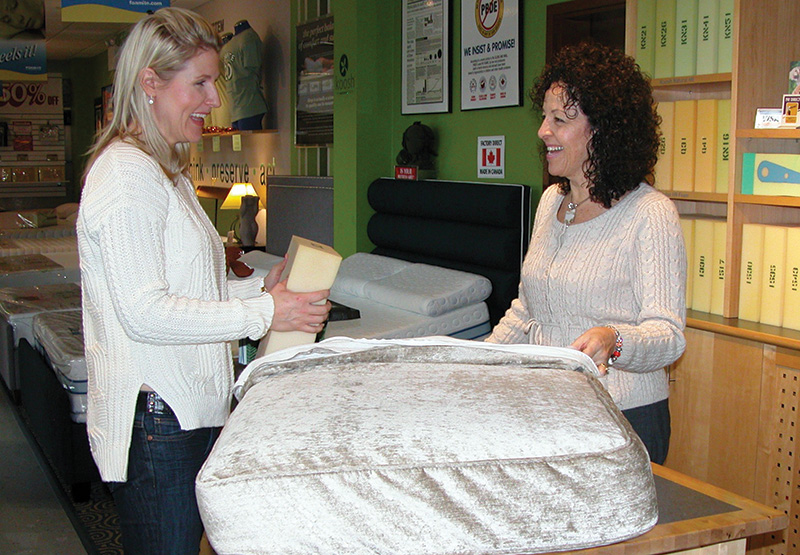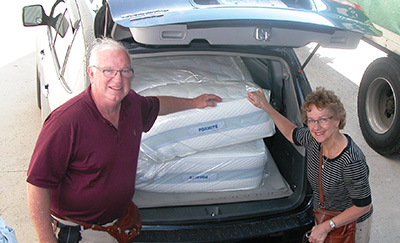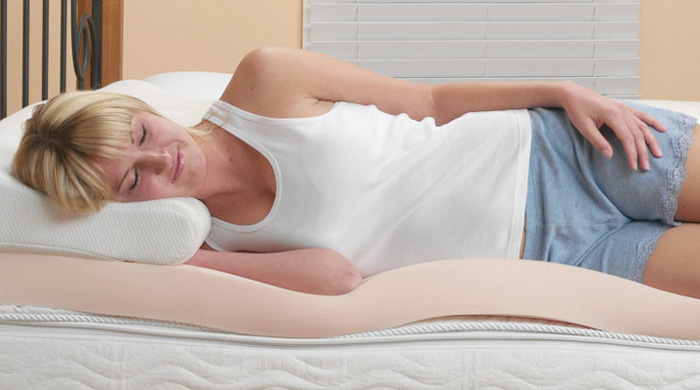Mattress Questions
If you want to buy a good mattress you should know the answers to these frequently asked questions. That way no one can sell you what you shouldn't buy.
1. What every bed should have, and should not have...
- New developments in foam, have made foam the fastest growing sleep surface.
- Foam is the key comfort ingredient used on all mattresses.
- The right firmnes of foam helps to relieve pressure points.
- The layering of different grades of foam gives you proper posturizing and maintains your spine in its natural alignment.
- Foam is non-allergenic, dust mite free and recommended by doctors all over the world.
- Consumers don't really know what to buy. Educated consumers go directly to manufacturers, like Foamite, to provide them with better quality sleep options at a variety of price points.
2. What are the attributes of an ideal sleep surface?
First is basic comfort. Above everything else, any and every bed has to be physically comfortable. You can't have a relaxed, healthful sleep without it.
3. Many feel that comfort is highly subjective, and different for every individual.
We disagree. Comfort is objective and measurable. It's a maximum of 0.5 lbs. of pressure on a square inch of body surface. Regardless of your body’s size or shape, any increase beyond that begins to restrict circulation and starts the muscle tension that produces restless tossing and turning. (Ergocheck Testing)
4. You're talking about pressure points?

Exactly. Comfort, absolute physical comfort, is nothing more than the absence of pressure points.
5. And foam gets rid of them?
Only a sleep in space or on a clinically perfect flotation system will do that. But foam does minimize their effect better than any other practical material available today. Its characteristic ability to contour and conform to any irregular shape, in this case the human body, is unsurpassed.

6. How does contouring provide comfort?
It allows more of the body to contact the sleep surface. The more square inches of contact, the less overall pressure per square inch, and the less opportunity for discomfort in any local area. In effect, foam's contourability allows every inch of body to literally carry its own weight. Every type of sleep product, even water and air beds, are using more and more foam to add comfort.
7. What's next on the most important sleep attribute list?
Support. Lots of room for discussion here. Two real camps with basically differing views. First, there are those who have been conditioned over the years to equate support with firmness..."a good firm mattress is necessary for a healthy sleep, a soft mattress means morning backache." Then, there are those who say firm is needlessly uncomfortable and impedes relaxing sleep. Let's look at some suggested criteria for support.
8. Simply stated:

"the sleep surface should hold the spine as close as possible to its natural alignment while standing, regardless if you are a side or back sleeper."
There are a couple of other support considerations we can touch on later, but I agree completely with the natural spine alignment criteria. Support is nothing more than the absence of sag. Sag is the enemy, not soft.
9. How do the two camps feel about that?
The basic difference is that the 'firm' group allows the body to conform to the unnatural, straight shape of the sleep surface. They sacrifice both a natural spine line and comfort with their acceptance of the 'firm is healthful' dogma. The 'comfort' group looks for a surface that conforms to them. They maintain a natural spine line and pick up the added comfort that contouring brings as a bonus.
10. We're back to the advantages of contouring again?
Absolutely. You maintain a straight natural body line only when the sleep product has the ability to conform to your shape. That can mean being able to accommodate as much as 3" of shoulder or hip for a side sleeper. Foam does it best but you should have at least 3 inches of foam next to you, with the possible exception of water or air beds.

11. Water and air beds provide infinite contouring on their own.

True. But deep contouring can also create some problems for them. Both air and water operate within enclosed reservoirs. The volume of fluid that is displaced by a hip or a shoulder moves to another unpressured part of the bed, usually the corners, and can distort the shape of the sleep surface.
It generally produces a 'hammock' or sag effect, exactly what you don't want for natural spine alignment. At the same time, this action can also tighten the surface causing a tough membrane that can actually work against comfort. However, a number of engineering refinements, including isolated and separate chamber reservoirs, and foam toppers, have greatly reduced both the distortion and the membrane feeling in these flotation systems.

In foam flotation, the volume of air displaced by the same hip or shoulder moves easily through the open cell structure of the foam and is vented to the atmosphere without distorting the shape of the sleep surface or support system.
12. What has foam meant to the bedding industry?
13. Some other considerations were mentioned as possible support criteria.

Yes. Support should be independent. Unequal weight, or toss and turn activity should be restricted to the individual, and not influence the other sleeping partner. Only foam, without a rigid connected structure, and with its ability to react only to the immediate area of applied pressure, or weight, makes these attributes a practical reality.
14. Comfort, support, unequal weight partners, isolated activity. What other sleep attributes should be considered?
Those are definitely the majors. But I would also include a couple of others. Noise is something every bed should be without. Another is moving response. When you move in bed, the surface literally follows you around. Its reaction to your moves can range from 'bouncy' to 'tranquil'. Foam is quiet, and with its lack of moving parts and accompanying inertia it reacts very gently to body movement.
In summary, those are the sleep benefits that quality sleep products should offer. They may, or may not line up with the attributes as seen by the merchandiser, or the consumer. The uncomfortable, overly firm bed is still very much in vogue.
Consumers don't really know what to look for in sleep products. They buy what they are sold. The onus of providing a better quality sleep lies with sleep products manufacturers, like Foamite, and their deeper understanding of true sleep attributes, and the ways to meet them.




















